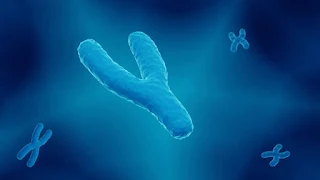Humans have two sex chromosomes, X and Y. Males usually have one of each, while women have two X chromosomes.
But scientists discovered decades ago that the human male Y chromosome deteriorates and may disappear within a few million years, which could lead to our extinction unless we develop a new sex gene.
But a recent paper published in the Proceedings of the National Academy of Sciences shows how two species of mammals, including the spiny rat, evolved a new male-specific gene, replacing the Y chromosome.
How does the Y chromosome determine human sex ?
In humans, as in other mammals, females have two X chromosomes, and males have one X chromosome and a small Y chromosome.
The X chromosome contains about 900 genes that carry out all kinds of non-sex functions. But the Y chromosome contains few genes (about 55) and a lot of noncoding DNA — simple repetitive DNA that doesn't seem to do anything.
However, the Y chromosome is powerful because it contains a crucial gene that initiates male development in embryos.
At about 12 weeks after conception, this master gene turns on other genes that regulate testicular development. The fetal testicle makes male hormones (testosterone and its derivatives), ensuring that the child develops as a male.
This master sex gene was identified as SRY in 1990. It works by triggering an epigenetic pathway that starts with a gene called SOX9, which is key to determining males in all vertebrates, although it is not located on the sex chromosomes.
The Y chromosome disappears
There are many different sex-determination systems in the animal kingdom, but in almost all mammals, sex depends on the X and Y chromosomes. If a fetus inherits two X chromosomes, it will develop into a female. If he inherits X and Y, he becomes male.
The surprising discovery for scientists was that there are endangered species that lack a male Y chromosome, which sparked an uproar that this could herald the imminent demise of the human Y chromosome.
Rodents that do not have a Y chromosome
The good news, scientists point out, is that two strains of rodents that have already lost their Y chromosome are still alive.
These strains, in which the Y chromosome and SRY are completely missing, include mole voles in Eastern Europe and spiny rats in Japan.
Although it's not yet clear how mole rats determine sex without the SRY gene, a team led by Hokkaido University biologist Asato Kuroiwa has had more luck with spiny rats - a group of three different species on Japanese islands that are all endangered.
Kuroiwa's team discovered that most of the genes on the spiny rat's Y chromosome were transferred to other chromosomes. But it found no sign of SRY, nor the gene it replaces.
In 2022, the team published a paper in the journal PNAS, in which the team tested and sequenced the genomes of several male and female mice.
What they discovered was a small difference near the key sex gene, SOX9, on chromosome 3 of the spiny rat. They found a small gene duplication (only 17,000 base pairs out of more than 3 billion) that was present in all males but not females.
The team suggested that this small segment of repeating DNA contains the switch that normally turns on SOX9 in response to SRY. When they introduced this gene duplication into mice, they found that it boosted SOX9 activity, so the change may allow SOX9 to work without SRY.
What does this mean for the future of men
The imminent disappearance - in evolutionary terms - of the human Y chromosome has fueled speculation about our future.
Some lizards and snakes are female-only species and can make eggs from their genes through what is known as parthenogenesis. But this cannot happen in humans or other mammals because we have at least 30 important genes 'imprinted' that only work if they come from the father via sperm.
To reproduce, we need sperm and we need men, which means that the end of the Y chromosome could herald the extinction of the human race.
The new finding supports an alternative possibility - that humans could evolve a new gene that determines sex. However, the evolution of a new sex-determining gene has risks, including the possibility of more than one new system evolving in different parts of the world, which could lead to a "sex gene war" to separate new species.
Thus, 11 million years from now, we may not have humans, or several different human species may emerge through different sex-determination systems.
Tags:
science





